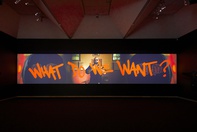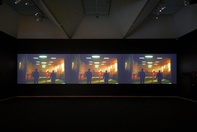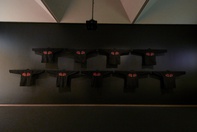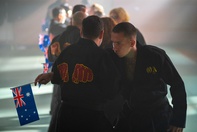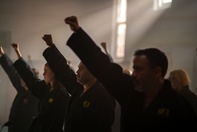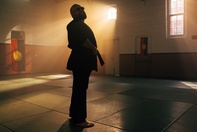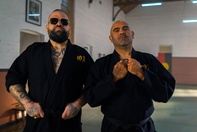Reko Rennie
Wurundjeri/Boon Wurrung Country, Melbourne
2023
Displayed 2023 at Art Gallery of New South Wales
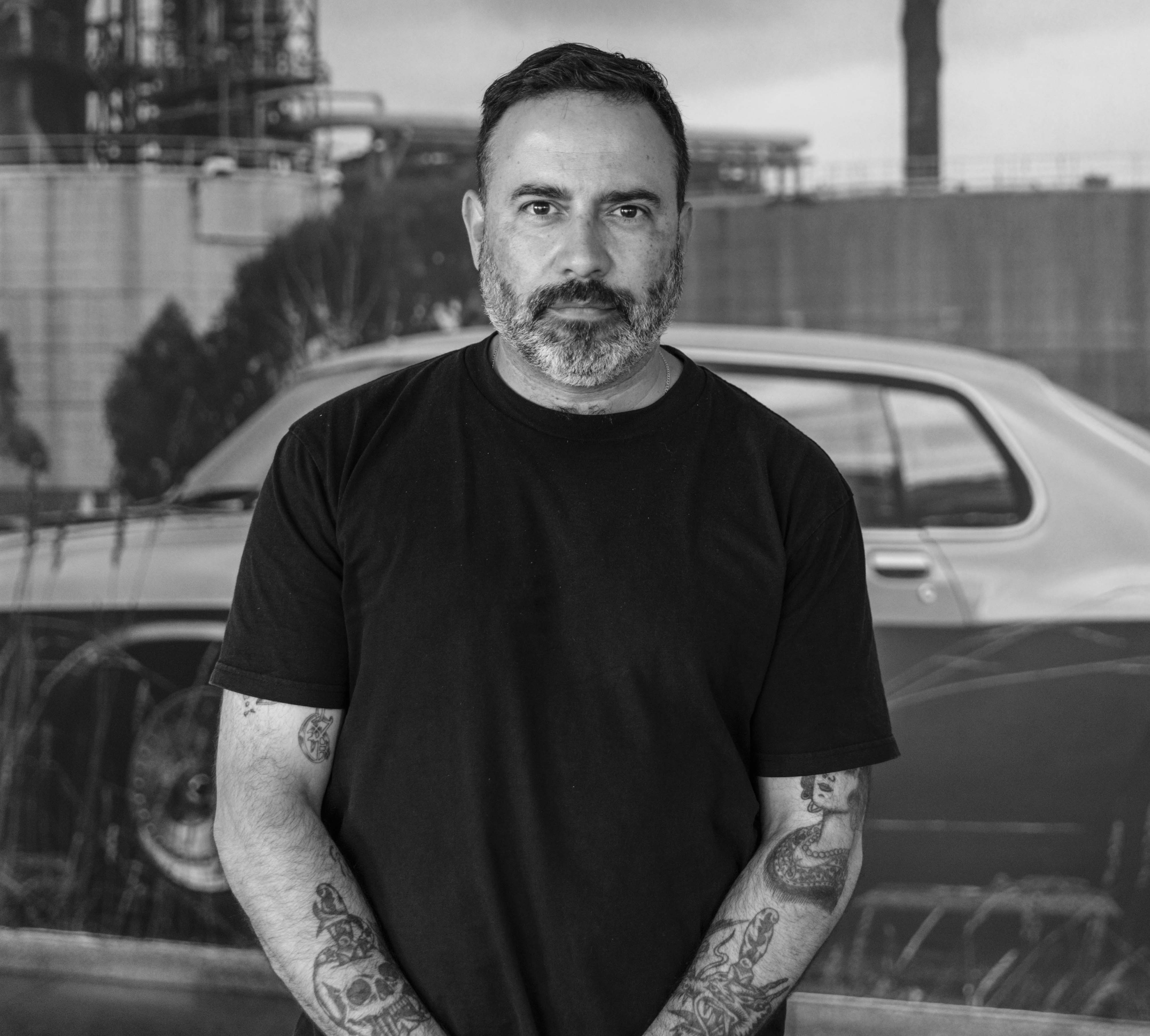
Reko Rennie
Kamilaroi/Gamilaroi people.
Born 1974, Wurundjeri/Boon Wurrung Country, Melbourne.
Lives and works Wurundjeri/Boon Wurrung Country, Melbourne.
Reko Rennie is an interdisciplinary Australian artist who explores personal and political narratives through the lens of his Kamilaroi heritage, alongside broader cultural themes around power, identity, memory, and history. Rennie’s distinctive visual language negotiates the hybrid forms of contested binaries – visible and invisible, public and private, urban and traditional – to provoke discussion of cultural and social visibility in a contemporary environment. A commitment to lush, bold colours, refined technique, and slick presentation grounds Rennie’s practice in the present, confidently affirming the ongoing presence and self-determination of Aboriginal identity.
Photograph: Sia Duff
Artist text
by Liam Keenan
Looming large, Reko Rennie’s latest video work What Do We Want? (2022) refuses to be ignored.
The three-channel video and sound installation draws us into a world of shadows and silhouettes, as if we are observing the secret meeting of an underground resistance movement. The opening scene displays the title of the piece in bold red text, referencing Rennie’s long-standing connection with graffiti art and culture, a recurring theme in his practice. We then see another familiar icon of Rennie’s practice, in the form of the insignia on the back of the keikogi uniforms worn by martial artists. The diamond symbol is a significant icon in Kamilaroi culture, and is often seen in the environment demarcating important sites. This is another important theme in Rennie’s work, which affirms his Ancestral connections to Country, and here it takes the form of the enclosed fist: the ultimate symbol of resistance, activism, and determination.
The cast is comprised of over a dozen First Nations people of different ages, professions, and cultural backgrounds, whose voices come together in solidarity as they shout for ‘restitution’ and ‘land back.’ As the students grapple and practice technique, we see another symbolic statement take place as the miniature Australian flags they are holding are dropped to the floor, in stark contrast to the large Aboriginal flags that hang on the walls.
The slick soundtrack by A.B. Original marries sampled instrumentation and vinyl crackle with a gritty boom-bap–style beat in reference to the African–American hip-hop artists of the 1980s and 90s who were looking outside of their own country to other forms of cultural expression, such as Chinese martial-arts films and non-western instrumentation.
The work also references and celebrates the history of Blaxploitation cinema in America, a low-budget genre which often saw African–American creatives producing, directing, and soundtracking films that represented the realities of African–American culture at a time when there was little interest in doing so from the mainstream. These films were often genre-defying combinations of comedy and action, with many taking influence from the popularity of kung fu films at the time.
With this work, Rennie further expands his practice by incorporating more elements of his personal life, referencing the twenty-plus years he has spent practising jiu-jitsu. In What Do We Want?, the personal and the political become inseparable, coming together in a form of Indigenous expression that commands attention.
In the wake of the Black Lives Matter movement, and the rising awareness around racial inequity, What Do We Want? reminds us of the important history of solidarity between Indigenous Australian and African–American political activism. As the piece closes with the final statement of ‘No more cops killing our mob,’ we are left with Black fists, raised in unity.
Artist's acknowledgements
What Do We Want?
Director Reko Rennie
Produced by Film Camp – Philippa Campey and Molly O’Connor
Original Composition by A.B. Original
Produced by Trials
Director of Photography Sherwin Akbarzadeh
Editor Carlo Zeccola
Cast
Sensei Master: Adam Briggs
Students:
Caine Muir
Inala Cooper
James Saunders
Joe Bell
Kelvin Onus-King
Kimmie Lovegrove
Mila Rennie Galvin
Reko Rennie
Sermsah Pepi Bin Saad
Shane Cook
Talahiva Rose
Vicky Frowd
1st AD Molly O’Connor
Production Co-ordinator Felise Lyon
B Camera Operator Carlo Zeccola
1st Assistant Camera A Cam Lachlan Wright
1st Assistant Camera B Cam Cameron Gaze
2nd Assistant Camera Thomas Hayes
Sound Recordist Steven Bond
Boom Operator Hayden Guildford
Gaffer Tommi Hacker
Grip Birrin King
Lighting Assistant Louis Walter
Stills Photographer Ellery Ryan
Art Department Lauren Beck
Runner Shivesh Ram
Costume Design Reko Rennie
Costume Embroidery Best Embroidery
Assistant Editor Louise Mullins
Additional Editing and Conform Eva Otsing
Post Production Facility Crayon
Colourist Abe Wynen
Graphics James Neilson
Sound Post Facility Windmill Audio
Sound Mix Pip Atherstone-Reid
Camera House VA Hire
Lighting Supplier Film Star Lighting
Commissioned by ACMI and Artbank
Reko Rennie is represented by STATION, Melbourne and Sydney.
